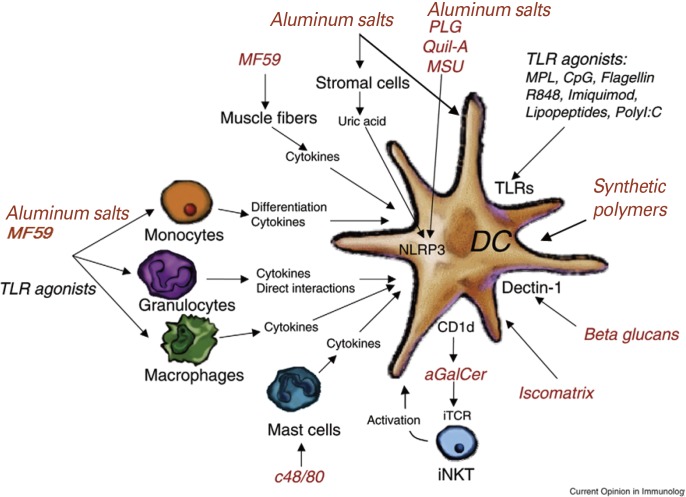Fig. 3.
A model of multiple mechanisms of adjuvanticity that converge toward dendritic cell (DC) activation. Adjuvants activate DCs either through direct interactions or through cellular intermediaries. toll-like receptor (TLR)-dependent adjuvants (in black) act directly on DCs; however, they can also activate other cells expressing the responding TLR. TLR-independent adjuvants (in red) can act directly either on DCs or on accessory cells. Aluminum salts, PLG, MSU, and Quil-A activate the NLRP3 inflammasome. Aluminum salts and MF59 act on monocytes, macrophages, or granulocytes to induce cytokines that generate a local immunostimulatory environment eventually leading to DC activation. In addition they also promote monocyte differentiation into DCs. MF59 can also activate muscle cells at injection site. It has been suggested that aluminum salts causes local necrosis of stromal cells leading to the release of uric acid, an endogenous danger signal that activates the inflammasome. Mast cell activators such as c48/80 can also act as adjuvants in a DC-dependent mechanism. iNKT activation by a-GalCer presented on CD1d leads to DC activation. Beta glucans activate DC through dectin-1 and ISCOMATRIX directly promotes cross-presentation in DCs [68]. So far, a role by TRLs has not been shown for the adjuvant action of polyelectrolytes. Reproduced from De Greggorio et al. (2009) with slight update and with permission of the author and publisher, Elsevier, Current Opinion in Immunology [68].

